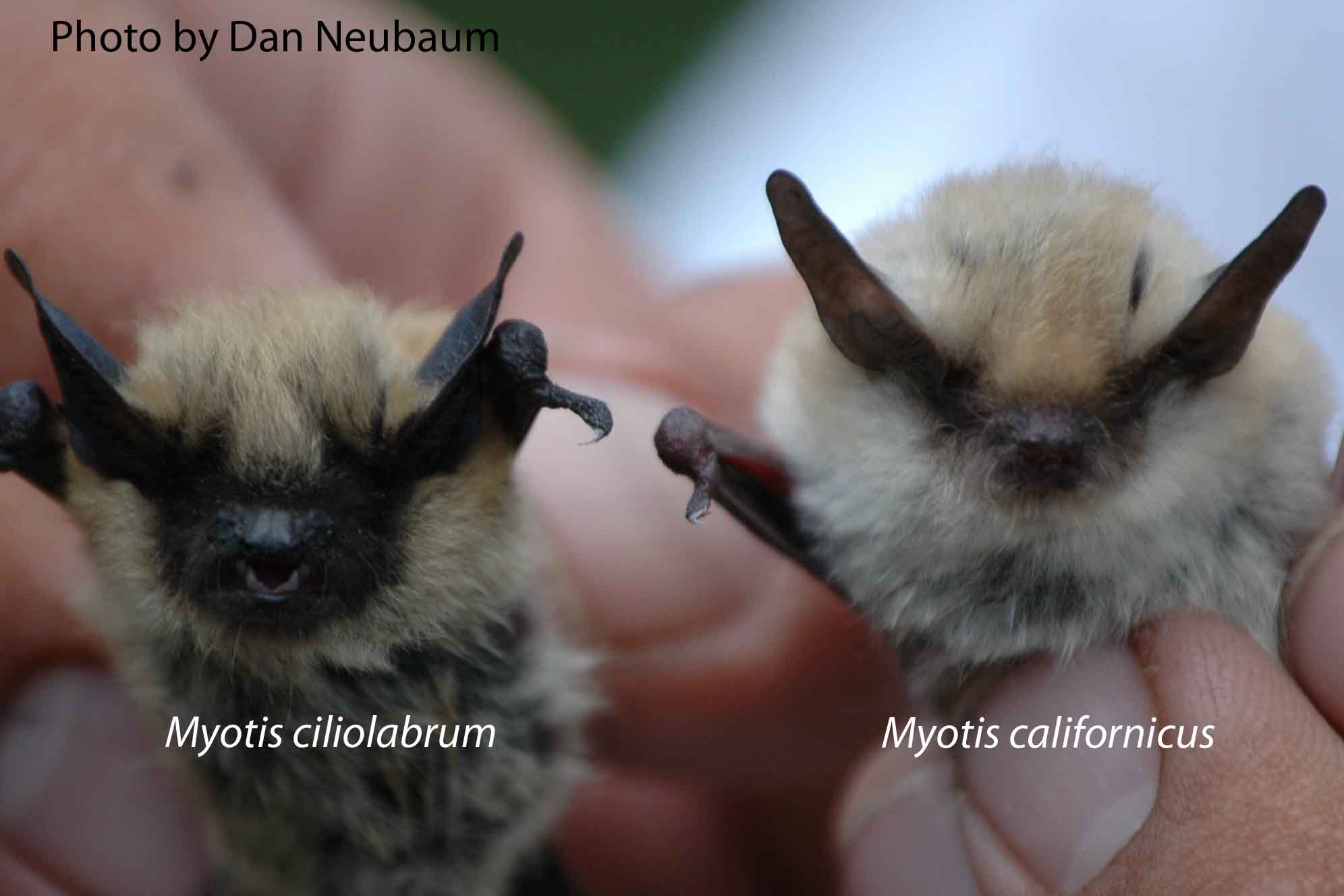Bats of Colorado > California myotis (Myotis californicus)

This is a small, pale-colored myotis with dark ears. The hairs of the dorsum are yellowish brown and lack burnished tips. The braincase rises abruptly above the rostrum. Total length of nine individuals from northwestern Colorado averaged 83.4 mm, length of forearm averaged 33 mm and weight averaged 4.8 g. Wingspan is about 210 mm. The only other Colorado myotis as small as the California myotis is the western small-footed myotis, which may be darker brownish in color, has dorsal hairs with brassy, burnished tips, a smaller hind foot and a skull with a flat profile, the forehead rising gradually from the rostrum. Care is needed to distinguish the species in the field, and certain identification requires comparative material in the museum.
Like a number of other species of myotis, this is a bat of western North America, ranging from central Mexico north to British Columbia and from the Pacific Coast to Colorado, where it occurs at lower elevations in valleys and canyons along the Western Slope.
This is a species of semi-desert habitats, including pi-on-juniper woodland and desert scrub. The animals roost by day in crevices, mines, caves, buildings, beneath bridges or behind loose bark. Night roosts include trees, shrubs and structures such as porches, eaves and outbuildings. Night roosts are dark and sheltered from wind. There may be local movements to suitable hibernacula in caves and mines, but long-distance migration is not known. The winter range of Colorados population is unknown, but the animals probably hibernate in the state.
Copulation occurs in fall, and sperm are stored over winter by the female. Fertilization and implantation take place in spring. Just when implantation occurs is not known, so the gestation period has not been calculated, but probably it is about six weeks. A single young is born to a female in a nursery colony perhaps in May or June or even later. Lactating females have been captured in Colorado as late as August.
The California myotis emerges in early evening to feed, just after the tiny western pipistrelle, which has a butterfly-like flight. It forages in arroyos, gaps between trees and near boulders and cliffs. It is active until about midnight and then again about dawn. Typical food includes flies, moths and spiders.
This bat appears uncommon in Colorado except locally in the canyon country at lowest elevations on the Western Slope. Its biology here is poorly understood.
None




